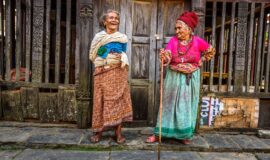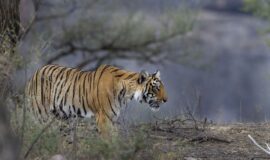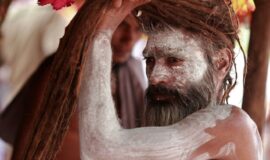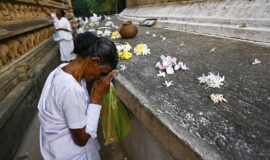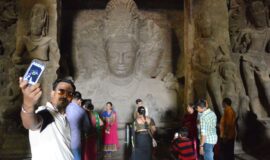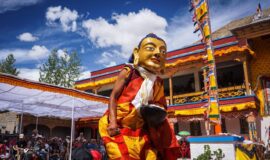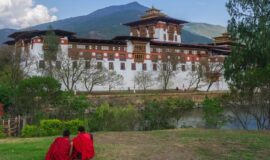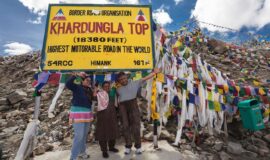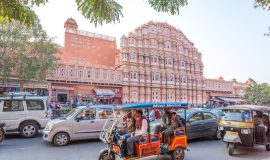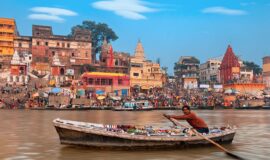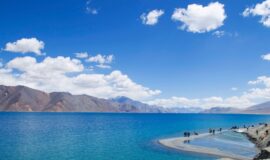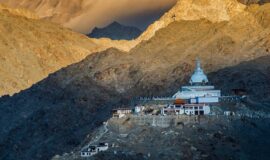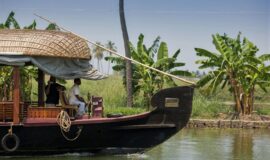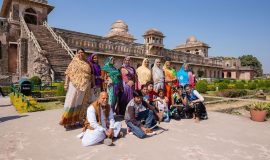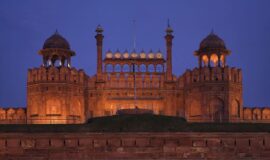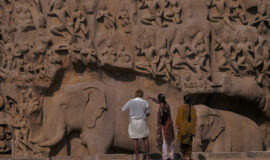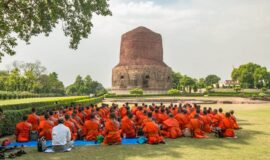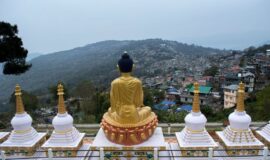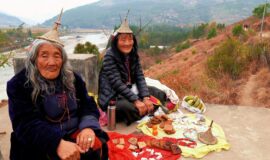The Heart and Soul of Yoga
International Yoga Day – why June 21?
Yoga – from India to global phenomenon
The different forms of yoga
Modern variations
Where to learn your instructor’s stripes
TOP YOGA RETREATS IN INDIA
LUXURY RETREATS
BUDGET RETREATS
Some Images of Yoga in India
Yoga has gone more places than the most Ardent Jetsetters and has found enthusiastic welcome practically everywhere it has traveled. By combining the body’s movements and positions to unify it with mind and soul, yoga just might be India’s most popular and widespread export. Its holistic approach to wellness and its effectiveness has even been recognized by the United Nations with International Yoga Day on June 21.
The campaign conducted by the Indian government to gain UN endorsement was certainly an effective way to promote yoga. Yet, prominent people have been following their beneficial practices for quite a long time. Its modern popularity came thanks, in part, to the Beatles.
The story begins when Maharishi Mahesh, a yogi, and revered spiritual leader, visited London to hold lectures on Transcendental Meditation in 1967. The Beatles, who were already on the way to becoming musical and cultural legends at that time, were eager to learn more about yoga and meditation, and in the following year, they traveled to India to visit Maharishi at his ashram in Rishikesh. During their sojourn there, they supposedly wrote 48 songs. Some of them were eventually included in the albums Abbey Road and the White Album.
Wherever the Beatles traveled automatically gained the interest of others, and visits from other prominent celebrities soon ensued. Among them were singer/songwriter Donovan, actress Mia Farrow, and photographer/film director Paul Saltzman, who took widely publicized photos of the Beatles in Rishikesh. The Beatles became devotees of yoga and meditation, and their visit has made Rishikesh famous as the ‘Yoga Capital of the World’.

Men outside the Maheshwar palace in Madhya Pradesh lie on the floor practicing yoga. Yoga has received a re-boost in India after the Indian government’s effort to get it UN recognition and the declaration of June 21 as International Yoga Day © Stefano Ember
International Yoga Day – why June 21?
The summer solstice, the longest day of the year in the northern hemisphere, is June 21. On that day, the sun’s course over Earth passes from north to south. According to legend, the Adiyogi was given by Shiva on the first full moon after the summer solstice to the seven Saptarishis. The full-moon day is celebrated as Guru Purnima, and the six-month period between the summer and winter solstice, known as Dakshinayana, is considered as a period especially propitious for people seeking spirituality.
Yoga – from India to global phenomenon
The origins of yoga may go back as far as the Indus-Saraswathi Valley civilization five millennia ago. It is mentioned in the ancient Vedic texts, the oldest Hindu scriptures. Yoga was developed into an organized system when Patanjali composed the Yoga Sutras around 400 CE. This work faded into obscurity and was all but forgotten until Indian scholar and spiritual mentor Swami Vivekananda revived interest in it in the late 19th century.
Patanjali’s sutras had been intended to help people reach samadhi (enlightenment), but centuries later, his techniques were eventually developed to include improving the function of boy and mind so as to enhance overall wellbeing and the enjoyment of life.

The slow-paced Hatha Yoga involves holding the posture for a few breaths. Renowned yoga guru, Baba Ramdev performs a yogasana on the stage on the final day of the three-day yoga camp at Gaya in Bihar © R KUMAR007
Yoga gained significantly more attention worldwide when Swami Vivekananda spoke at the Parliament of the World’s Religions held in Chicago in 1893. Perhaps the modern world’s most revered yogis, Krishnamacharya and Sivananda, developed Hatha Yoga a few decades later. Hatha Yoga came to embody the modern discipline of yoga and formed the basis for most other forms practiced today. The school established at Mysore by Krishnamacharya produced three yogis perhaps most responsible for the spread of yoga around the world: B.K.S. Iyengar, T.K.V. Desikachar, and K. Pattabhi Jois. According to Iyengar, “Yoga is an ancient but perfect science; it deals with the evolution of humanity. Yoga means union—the union of body with consciousness and consciousness with the soul.”
While yoga has since grown in popularity throughout the globe, there is perhaps no other place outside India where it has been embraced as ardently as in Hollywood and America’s west coast. Yoga’s popularity there began with the activities of Eugenie Peterson – who came to adopt the name, Indra Devi. She was an actress, daughter of a Russian noblewoman and a Swedish banker, who became Krishnamacharya’s first female and first foreign disciple. After her training, she traveled first to China and then to Hollywood, where she opened a studio in 1948 that adapted yoga to appeal to Westerners. Among her students were Hollywood greats such as Gloria Swanson and Greta Garbo. Devi came to be called ‘The First Lady of Yoga’.

Hindu saints and yogis at the Kamakhya Temple in the city of Guwahati, Assam perform expert poses with ease on International Yoga Day. Iyengar yoga is named after one of the most famous yogis to come out of India, B.K.S. Lyengar © Talukdar David
The different forms of yoga
Hatha Yoga – This form is practiced at a slower pace than most other modern forms. Postures are held for a few breaths. Hatha has come to signify an approach to yoga in which one gently moves from one asana (yoga pose) to the next. It is less physically demanding than other variants and is thus offers beginners a very good introduction to yoga. It is also ideal for people just looking for a way to enjoy an enhanced sense of physical relaxation.
Vinyasa Yoga – meaning ‘to place in a special way’ in Sanskrit, Vinyasa incorporates graceful and controlled movements during which asanas are matched to breathing. It begins with a series of postures that compose the Surya Namaskar (a salute to the sun). The continuous flow from one asana to the next requires more muscle control and is thus more physically intense.
Ashtanga Yoga – meaning ‘eight limbs’ in Sanskrit, Ashtanga requires – and creates – more endurance. Asanas change fluidly while one’s breathing is synchronized with the movements. Its emphasis on the flow of changing postures and controlled breathing resembles Vinyasa, but in Ashtanga, one executes the exact same asanas in precisely the same sequence.
lyengar Yoga – named for one of the most revered yogis in modern times, B.K.S. Iyengar is a somewhat gentler form that also emphasizes yoga’s mental aspects. Simple equipment such as straps and bolsters are used to help align postures. Control of breathing is also a special object, helping practitioners to mentally submerge into the postures and meditate. The long stretches help relax the body and are particularly fitted for older people.
Sivananda Yoga – is a more comprehensive discipline that includes a positive mental attitude, diet, and relaxation. It is based on ‘five points of yoga’ – asana (exercise), pranayama (breathing), savasana (relaxation), Vedanta (diet and positive thinking), and dhyana (meditation). Sivananda includes the Surya Namaskar as well as other asanas.
Kundalini Yoga – meaning ‘spine’, this form is aimed at opening the body’s various chakras (focus points) along the spine from the head to the base by combining asanas, chanting, and meditation. This approach is meant to stimulate energy present in the spine and send it throughout the body.

Over two thousand school students perform the Surya Namaskara, salutation to the sun, on the International Yoga Day at Navi Fatehwadi Village in Ahmedabad, Gujarat © Dhapa Nitaben Harshaddhai
Modern variations
Power Yoga – this ‘fitness’ form of yoga is based on Hatha and Ashtanga asanas and incorporates dynamic movements to create a combined muscular and cardiovascular fitness routine. Besides the cardio workout, this form concentrates on building muscle through strength exercises successfully combined with the traditional postures. Power Yoga is a dynamic form of exercise and is thus often accompanied by a dynamic music beat.
Yin Yoga – also called Taoist Yoga, this form focuses more on meditation and can be used to help the body relax and recover after days of more intense yoga workouts. Yin Yoga concentrates on relaxing, stretching poses and uses props to help practitioners make their joints more flexible and supple.
Bikram Yoga – Bikram Choudury developed this form of yoga in the 1970s and focuses on flexibility and sweating poisons out of the body. It accomplishes the latter by conducting classes in a hot room, somewhat similar to a sauna, at a temperature of 40 degrees Celsius. A Bikram Yoga session consists of 26 asanas and lasts 90 minutes.

A woman practicing a yoga pose stretch on a rock looking over Hampi’s popular Virupaksha temple in Karnataka © Pikoso. kz
Where to learn your instructor’s stripes
Want to become a yoga instructor? These are some of the best places to get your certification:
Pattabhi Jois Ashtanga Yoga Institute, Mysore: K. Pattabhi Jois was one of the prominent yogis from India and a leading disciple of Tirumalai Krishnamacharya. Today, his daughter and grandson continue to teach yoga in the institute started by him.
Address: 235, 8th Cross, Gokulam, 3rd Stage, Mysore, Karnataka
Parmarth Niketan, Rishikesh: Spread over an eight-acre campus, Parmarth Niketan is one of the more reputed yoga institutions in the country, and certainly one of the prettiest—the ashram lies on the banks of the Ganga in the lap of the Himalaya. Every March, the ashram holds a week-long international yoga festival.
Address: Main Market Road, Near Ram Jhula, Swarg Ashram, Rishikesh, Uttarakhand.
Mysore Krishnamacharr Yoga Shala: The home of traditional Ashtanga Vinyasa, this yoga school, Mysore Krishnamacharr Yoga Shala, offers teachers’ training besides various courses for asanas, pranayam, mudra, philosophy, chanting, and Ayurveda. Its claim to fame is that the courses are taught under the aegis of B.N.S. Iyengar, Ashtanga’s oldest living teacher, and is considered one of the world’s foremost places to learn yoga.
Address: 490, Devamba Agrahara, K. R. Mohalla, Mysore, Karnataka.
Bihar School of Yoga, Munger: Here yoga is a lifestyle, and importance is given to Seva (Service and Selfless Efforts for Welfare of All) over asanas. This Seva is called Karma Asana and is considered a healing touch for one’s actions. One is supposed to perform gardening, kitchen work, and toilet cleaning as part of the service. Bihar School of Yoga teaches different forms of yoga, including Hatha Yoga.
Address: Bihar Yoga Bharati, Ganga Darshan, Fort, Munger, Bihar.

A meditation ceremony taking place at the Matrimandir Amphitheatre on the occasion of Auroville Birthday © Melting Spot
TOP YOGA RETREATS IN INDIA
LUXURY RETREATS-
Ananda In The Himalayas
Ananda is a 78-room luxury retreat spread over 100 acres on the lush grounds of the palace of the Maharaja Of Tehri Garhwal, in the lap of the Himalaya, near Rishikesh. It is one of the world’s most acclaimed luxury destinations when it comes to health and healing. Travelers from around the world arrive here to learn and practice Hatha Yoga, besides also correcting their doshas through ayurvedic programs, which include massages, enema, and diet control of different kinds. One of the most satisfactory Ananda experiences is its culinary offering, which places emphasis on locally-sourced organic ingredients, crafted into gourmet ayurvedic dishes.
Address: The Palace Estate, Narendra Nagar, Tehri Garhwal, Uttarakhand. 240 Km from the capital New Delhi.
SwaSwara — CGH Earth, Gokarna
The word SwaSwara means one’s own echoes or the voice of the inner self.’ SwaSwara is located at 0m Beach in Gokarna in the Indian State of Karnataka and is a luxurious retreat that offers a combination of yoga, ayurvedic treatments, and a ‘chance to connect with one soul.’ The place is cast in the colors of the earth and the ocean it is surrounded by and serves only locally-sourced and organic produce.
Address: Om Beach, Donibhail, Uttara Kannada, Karnataka.
Osho Meditation Resort, Pune
Though it has found itself at the center of some controversies, that does not take away from the beauty and lavishness of the place something you will realize once you step inside the 28-acre compound of Osho Meditation Resort with strikingly landscaped gardens and woodland. The center draws people from around the world eager to don the distinctive maroon that defines its new-age philosophy and step into its dancing halls, meditation rooms and Yogashalas. With its pools, spas and saunas, and boutique guesthouses, the place remains a popular choice for luxe meditation and yoga practice.
Address: Koregaon Park, Pune, Maharashtra
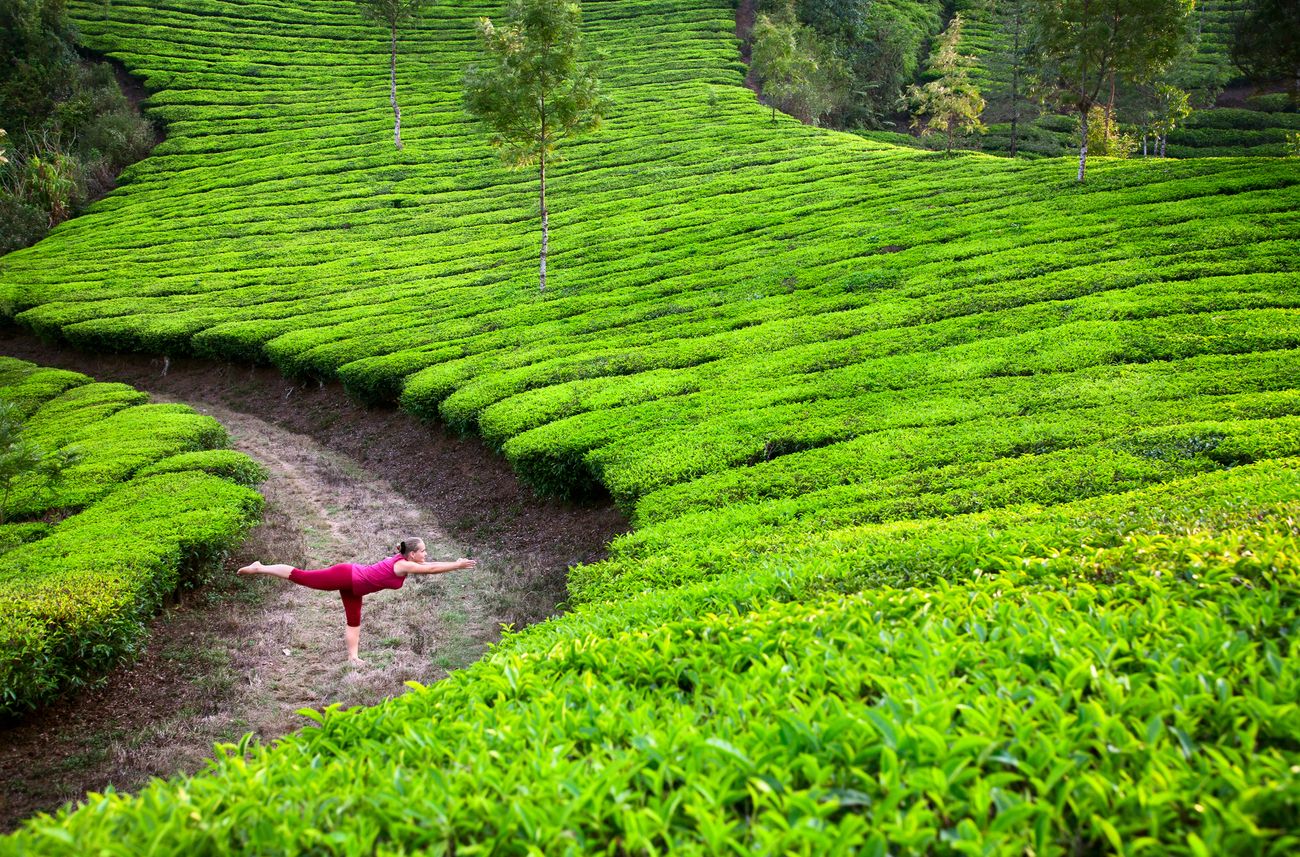
A yogi dressed in red performs the virabhadrasana, or the warrior pose, within the tranquil tea plantation in the Munnar Hills of Kerala © Pikoso.kz
BUDGET RETREATS
Himalayan Iyengar Yoga Centre, Dharamkot/Arambol (Goa)
Yoga is not just for a yogi to gain enlightenment and freedom but also for the common man to be peaceful and happy, learning to adapt to the present environment and adopt a lifestyle that brings harmony. Himalayan Iyengar Yoga Centre operates in Dharamkot (Himachal Pradesh) in summer and Arambol (Goa) in winter. The summer views from this low-key retreat comprise the gorgeous Himalaya with hills of old cedar rhododendron and oak. The winter sessions are held on Arambol beach in Goa with its dark sands and hippie vibes. The place offers a variety of yoga sessions ranging from five days up to two months besides Vipassana meditation.
Dharamsala Address: Dharamkot, Dharamsala, Himachal Pradesh.
Goa Address: Madhlo Vaddo, Arambol, Goa
Isha Yoga Centre, Coimbatore
Established by the Sadhguru, Isha Yoga Centre is a great place to learn yoga and engineer your inner self. Set in the foothills of the Velliangiri hills, the center offers accommodation in various-sized cottages and guest rooms. The center is known for its distinctive Teerthakunds—or ‘cleansing-pools’-that are gender-specific, apart from meditation domes. Its USP is its retreat program, called Inner Engineering, which involves pranayam and Shambhavi Maha Mudra, a breathing and meditation practice.
Address: 15, Govindasamy Naidu Layout, Singanallur, Coimbatore, Tamil Nadu.
Little Cove Yoga Retreat, Goa
Little Cove Yoga Retreat has been established by yoga guru Mahesh Pardeshi, who also teaches here. This popular getaway opens to Cola, a breathtaking, sparsely populated beach in South Goa, which adds to the charm of the retreat (the Yogashala is sea-facing and open on all sides). The place can only accommodate up to 22 guests at a time and doesn’t allow alcohol, non-vegetarian food, and smoking. Besides yoga, guests can also look forward to authentic ayurvedic treatments.
Address: Little Cola Beach, Canacona, South Goa.
Sivananda is also one of the prominent Yoga Ashrama and centers in India and around the world.
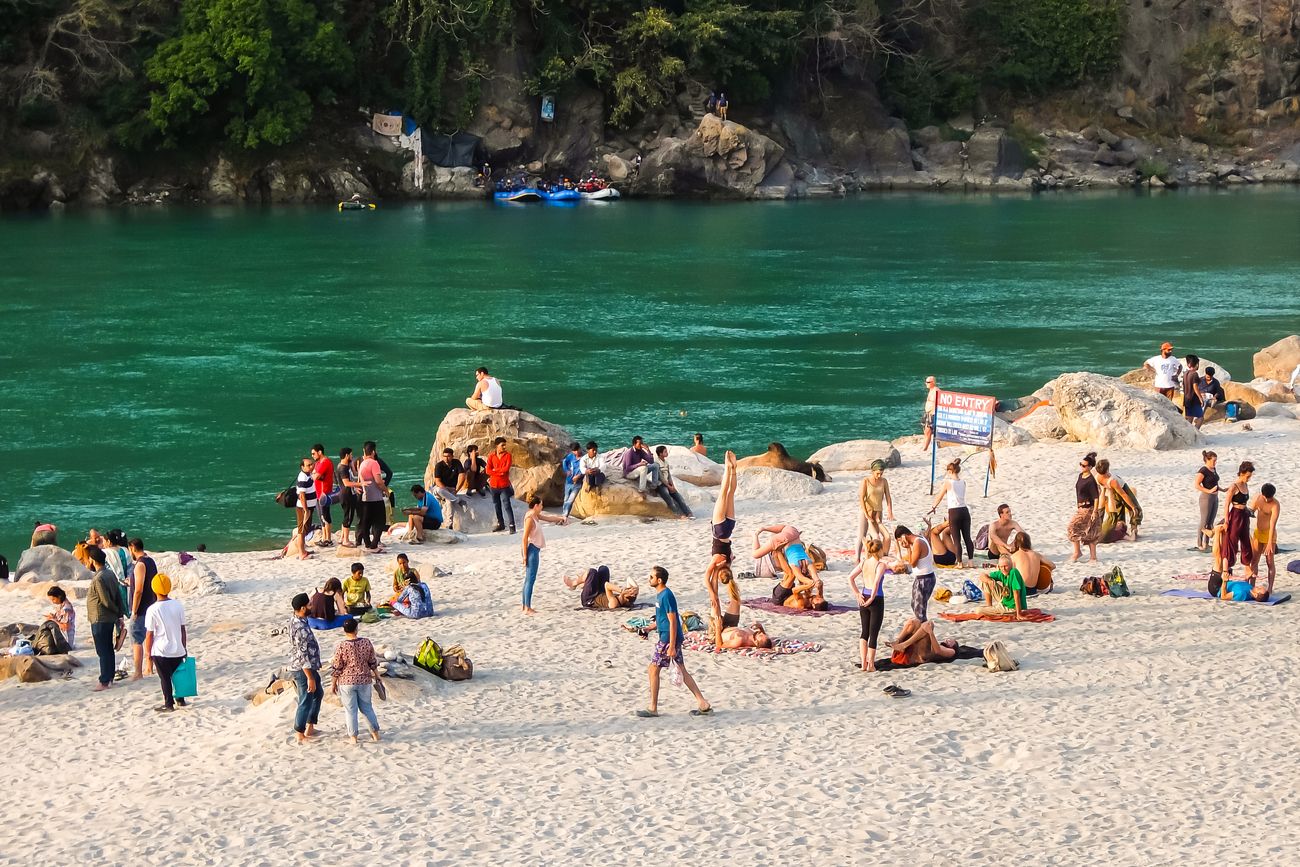
Tourists crowd around the banks of the river Ganga in Rishikesh, Uttarakhand, enjoying the pristine waters and the lovely view amidst the valley. Parmarth Niketan in Rishikesh is one of the more reputed yoga institutions in India © Denis. Vostrikov
Some Images of Yoga in India
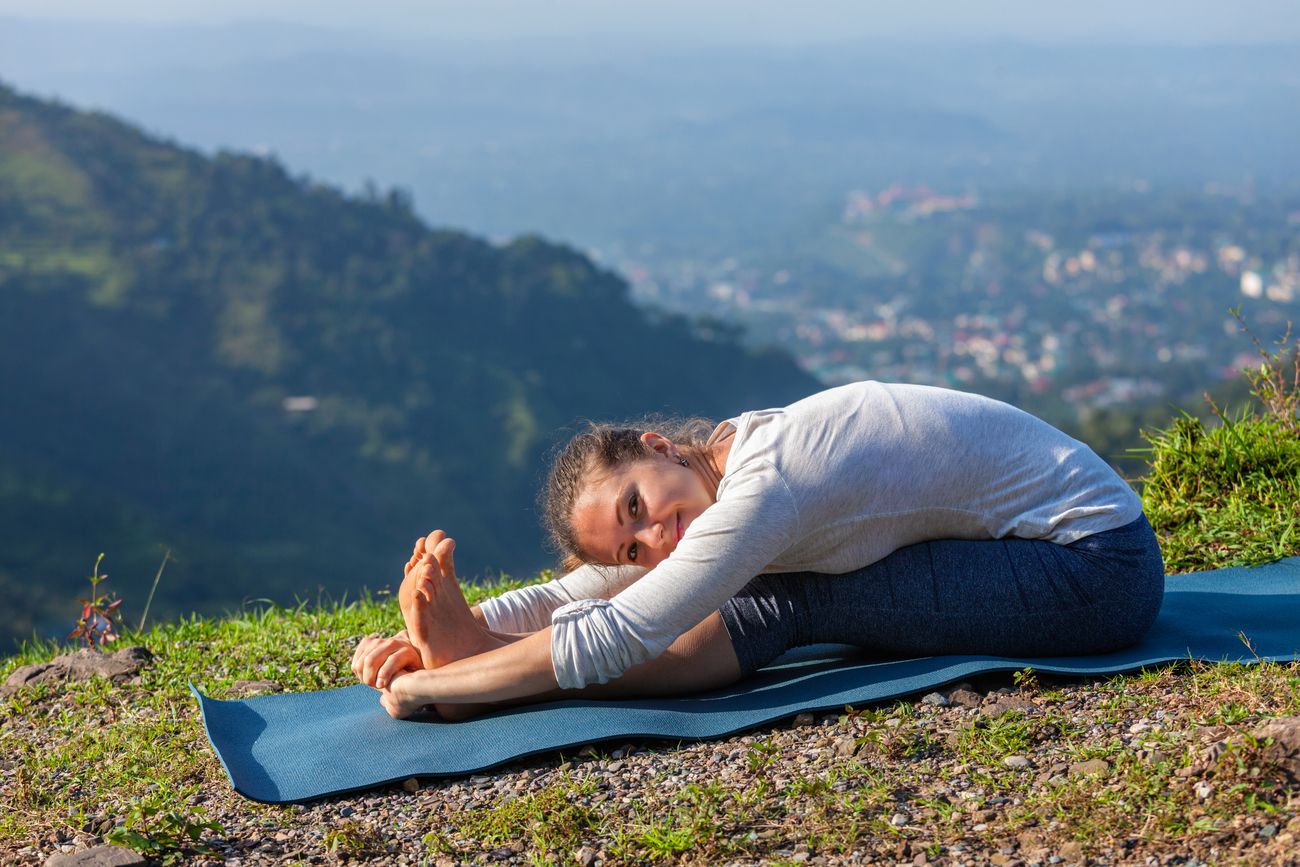
A young woman performs an asana from Ashtanga Vinyasa Yoga called Paschimottanasana seated amongst green mountains. Ashtanga Yoga requires synchronizing one’s breathing with a continuous flow of postures © Dmitry Rukhlenko

Jyoti Amge, the world’s shortest lady, and Dhanshri Lekurwade, a yoga student at the Ambedkar Garden in Nagpur on the days leading up to international yoga day © SSandy

A yoga instructor instructs eager students by the beach early in the morning as the waves crash on the sand alongside the sea breeze © Rawpixel. com
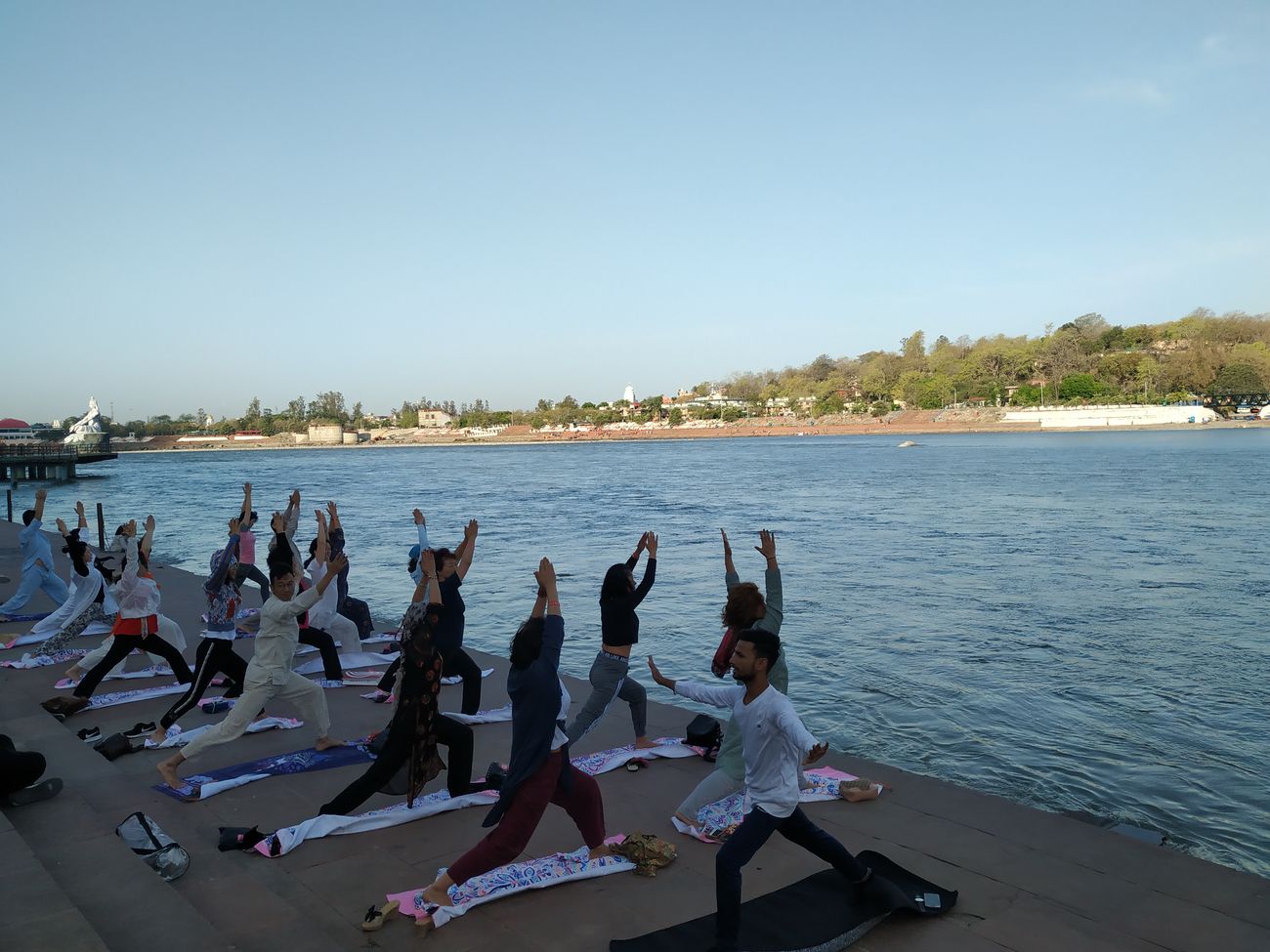
Indian and international yoga enthusiasts practice yoga at the banks of the holy river Ganges at Rishikesh in Uttarakhand on International Yoga Day. The Maharishi Mahesh Yogi Ashram in Rishikesh shot to fame when the Beatles spent a summer here learning yoga and meditation © Harshit Srivastava S3

As the sun sets into the ocean, it casts a silhouette on the yogis at the dawn-time class by the beach in Kerala © light look
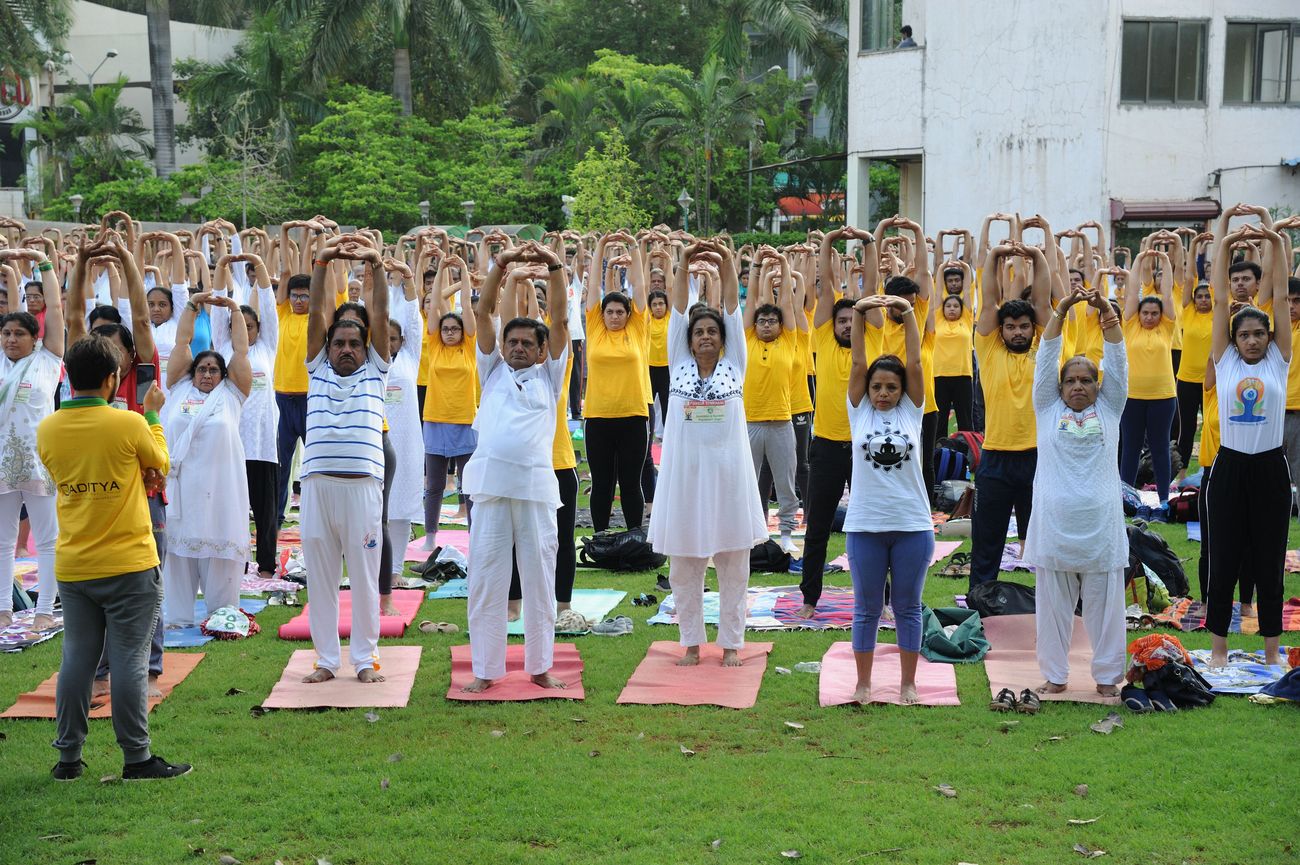
International Yoga Day celebrations in progress at a residential complex as residents perform yoga poses and stretches © RAMNIKLAL MODI
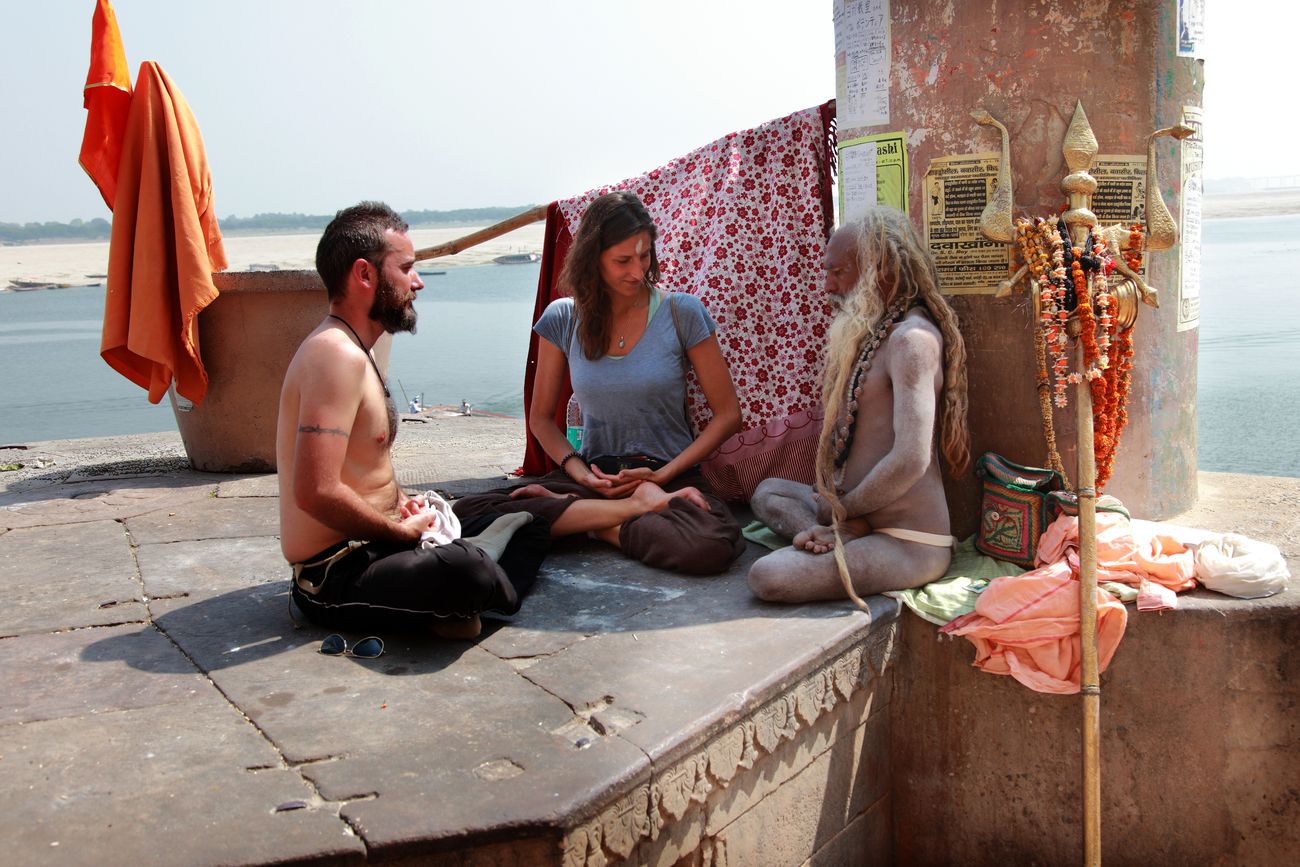
Pilgrims from outside India sit next to a saint learning yoga on the banks of the river Ganga at Varanasi, which is India’s most popular destination for pilgrims © AJP
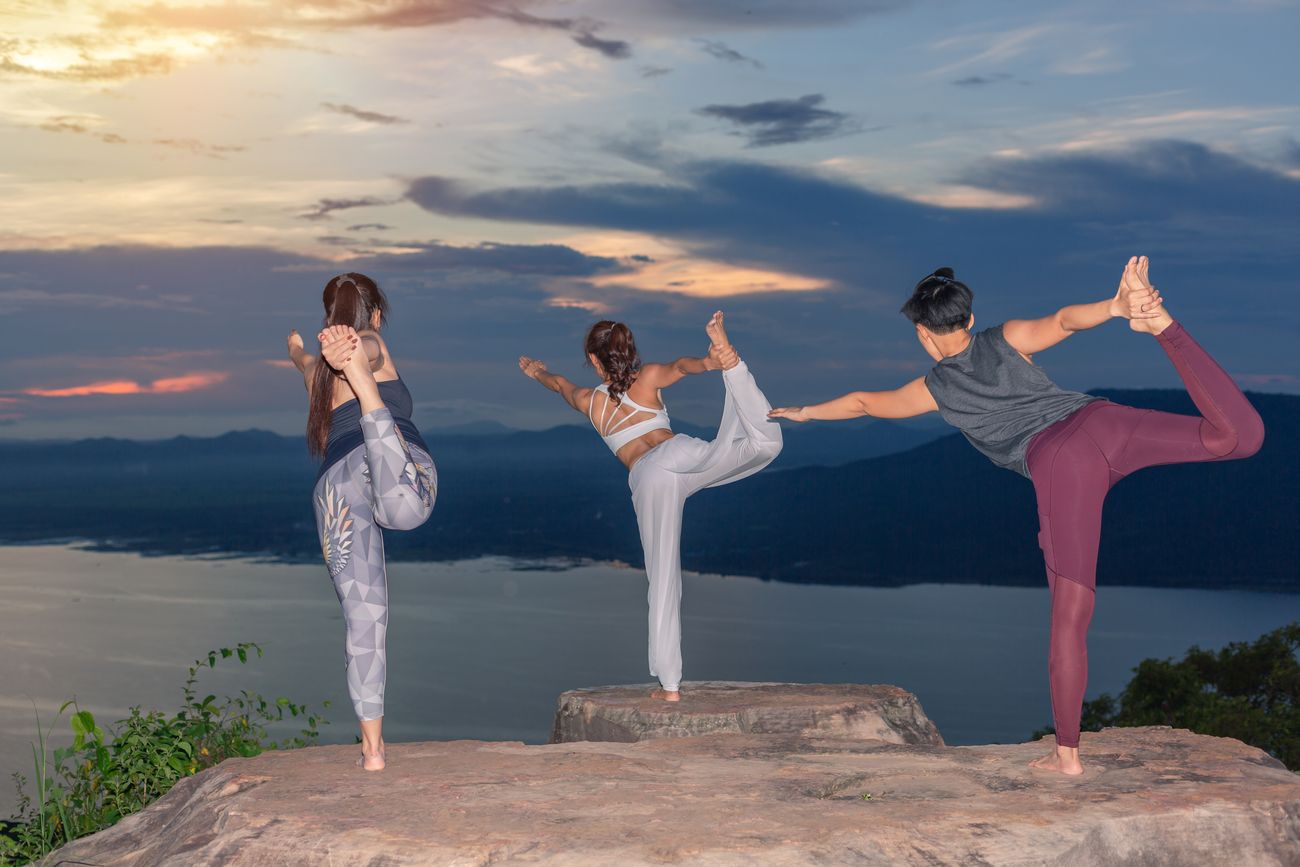
Against the backdrop of the sun setting over the Himalayan ranges, three women perform the Natarajasana, named after the Lord of Dance – Shiva © Sujinun Gosiyaphan
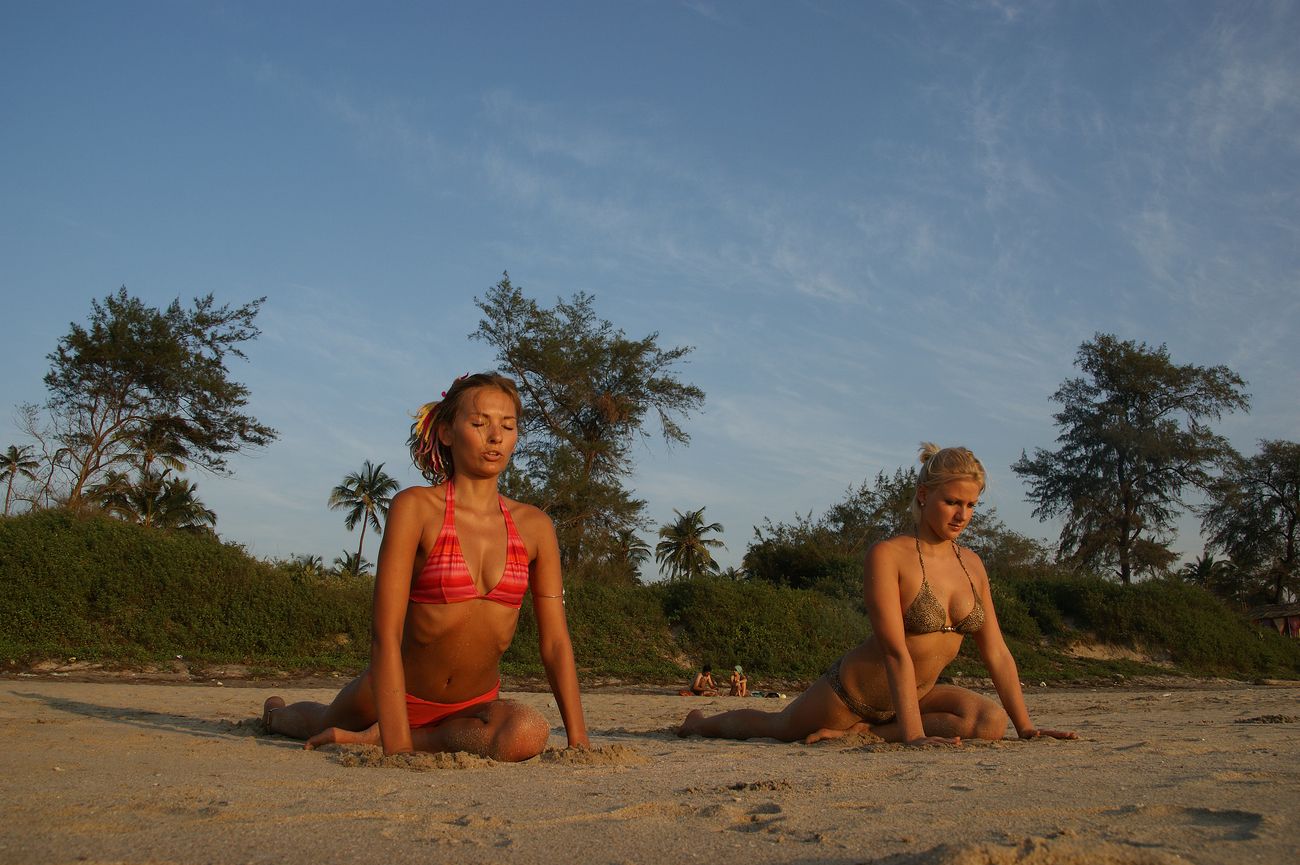
Yoga enthusiasts from outside India visit Arambol Beach in Goa and practice asanas as the sun sets casting golden light on them © Otar Gujejiani



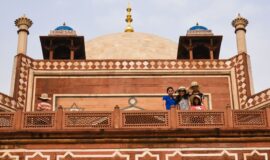
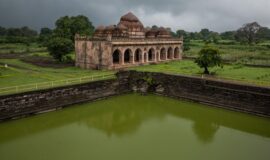

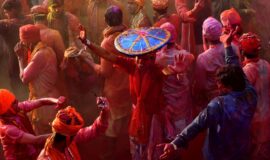
![Golden Triangle Tour with Goa [Culture + Beach Vacation] (12 days) Golden Triangle Tour with Goa [Culture + Beach Vacation] (12 days)](https://www.vacationindia.com/wp-content/uploads/2022/06/golden-triangle-tour-with-beach-vacation-270x160.jpg)
